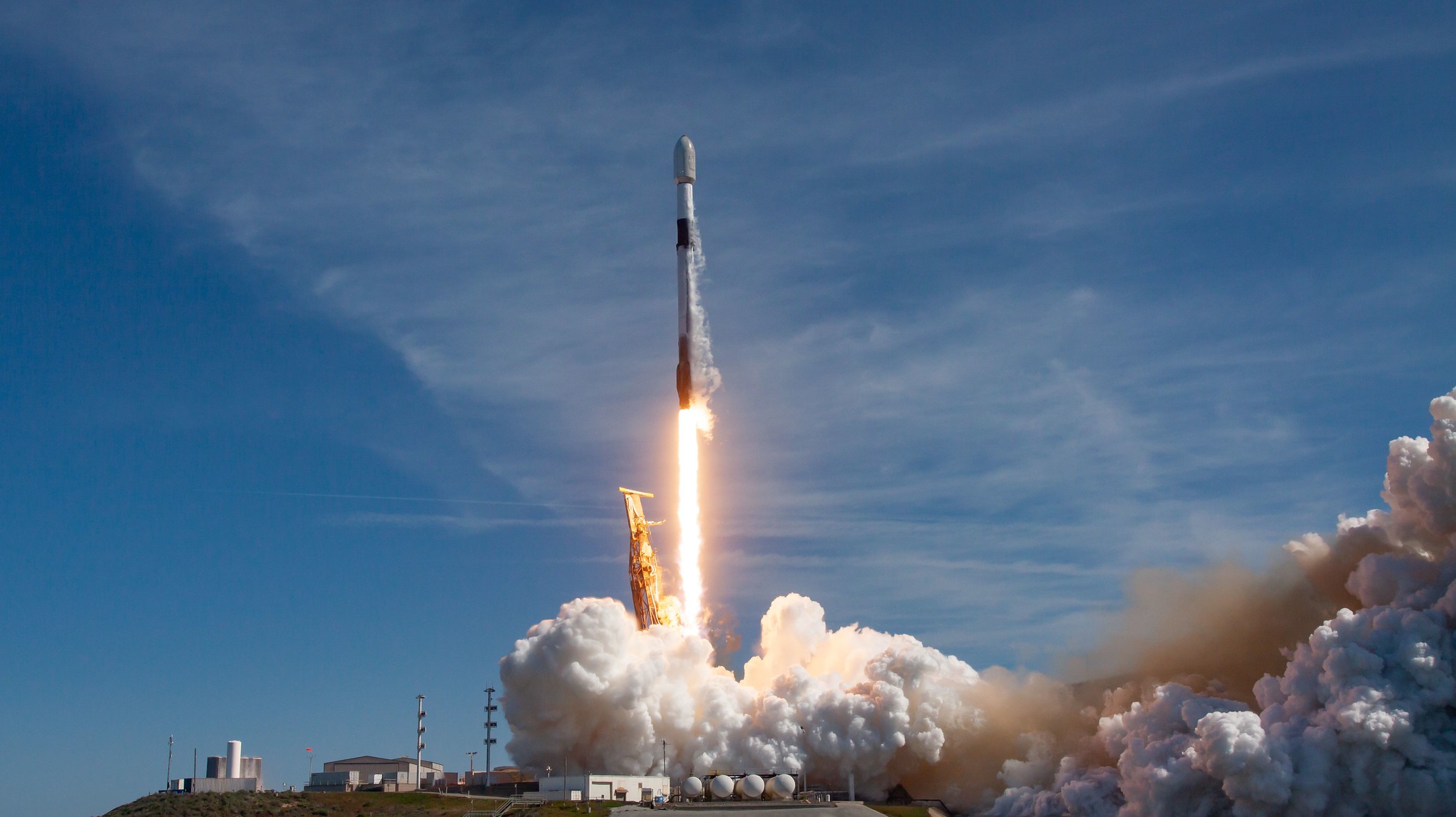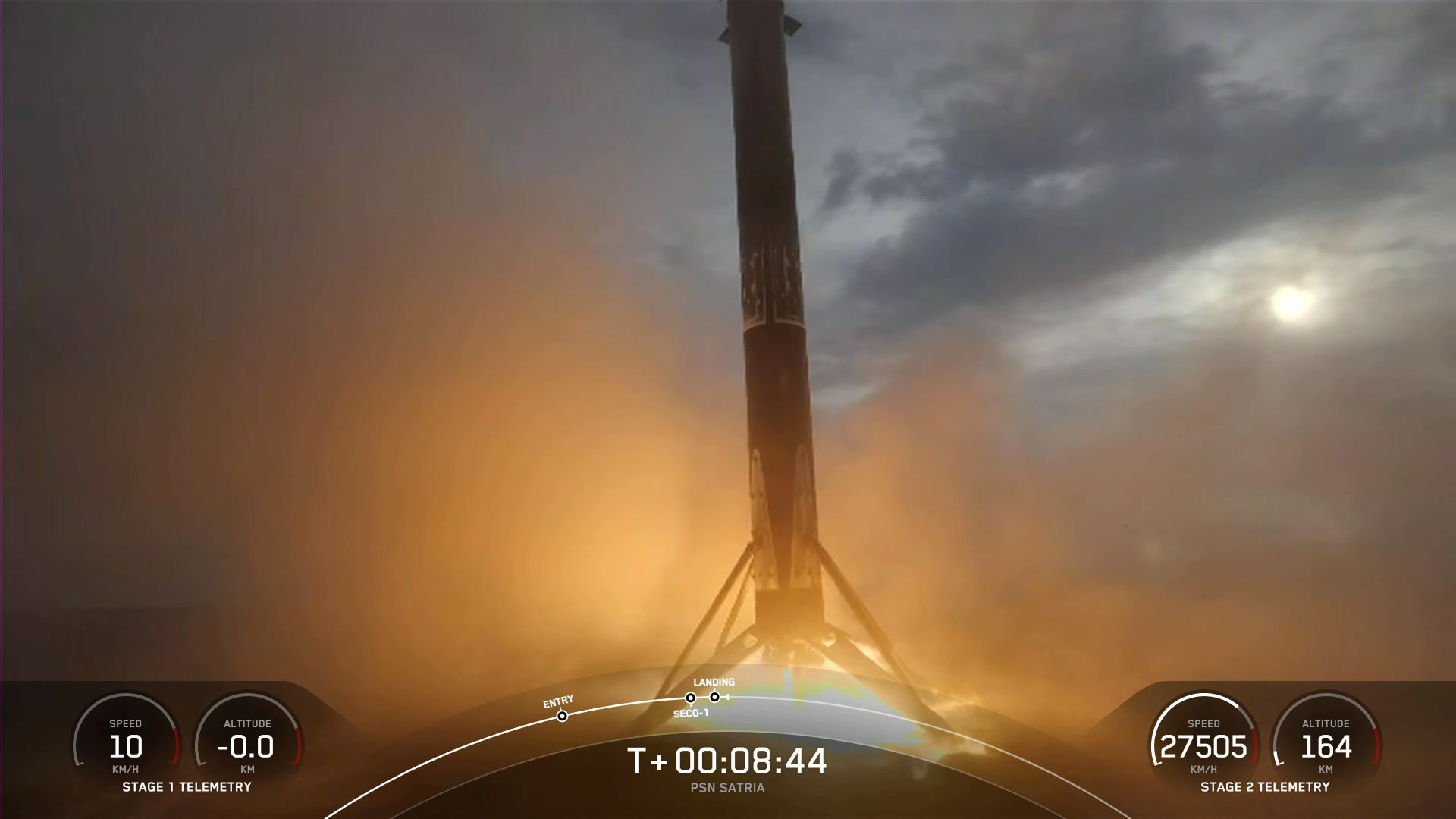SpaceX launches SATRIA-1 communications satellite for Indonesia, lands rocket at sea (video)
SpaceX launched a new Indonesian communications satellite into orbit from Florida on Sunday (June 18) and capped the flight with a flawless rocket landing at sea.
A Falcon 9 rocket topped with the SATRIA-1 telecommunications satellite lifted off from Cape Canaveral Space Force Station in Florida, soaring into the early evening sky at 6:21 p.m. EDT (2221 GMT) after a 15-minute delay due to high winds.
Related: 8 ways that SpaceX has transformed spaceflight
Shortly after liftoff, the Falcon 9's first stage booster returned to Earth for a vertical touchdown on the SpaceX droneship A Shortfall of Gravitas, which was be stationed in the Atlantic Ocean off the Florida coast.
The touchdown, which took place 8.5 minutes after liftoff, marked the 12th launch and landing for this particular booster, according to a SpaceX mission description. Among those previous efforts were four Dragon missions to the International Space Station for NASA, two of them crewed and two of them robotic resupply flights.
The Falcon 9's upper stage, meanwhile, continued carrying SATRIA-1 to geosynchronous transfer orbit, ultimately deploying the satellite there just under 37 minutes after liftoff.
SATRIA-1 (whose name is short for "Satellite of the Republic of Indonesia") will be operated for the Indonesian government by the Indonesian company PSN.
Breaking space news, the latest updates on rocket launches, skywatching events and more!
The $550 million spacecraft "is envisioned to boost connectivity inclusion in the country, providing free internet connection to 150,000 public facilities, including schools, regional government offices and health facilities," according to The Jakarta Post.
"SATRIA-1 will have a throughput capacity of 150 billion bits per second, three times the capacity of the nine telecommunication satellites that Indonesia currently uses," the outlet added.

Michael Wall is a Senior Space Writer with Space.com and joined the team in 2010. He primarily covers exoplanets, spaceflight and military space, but has been known to dabble in the space art beat. His book about the search for alien life, "Out There," was published on Nov. 13, 2018. Before becoming a science writer, Michael worked as a herpetologist and wildlife biologist. He has a Ph.D. in evolutionary biology from the University of Sydney, Australia, a bachelor's degree from the University of Arizona, and a graduate certificate in science writing from the University of California, Santa Cruz. To find out what his latest project is, you can follow Michael on Twitter.



